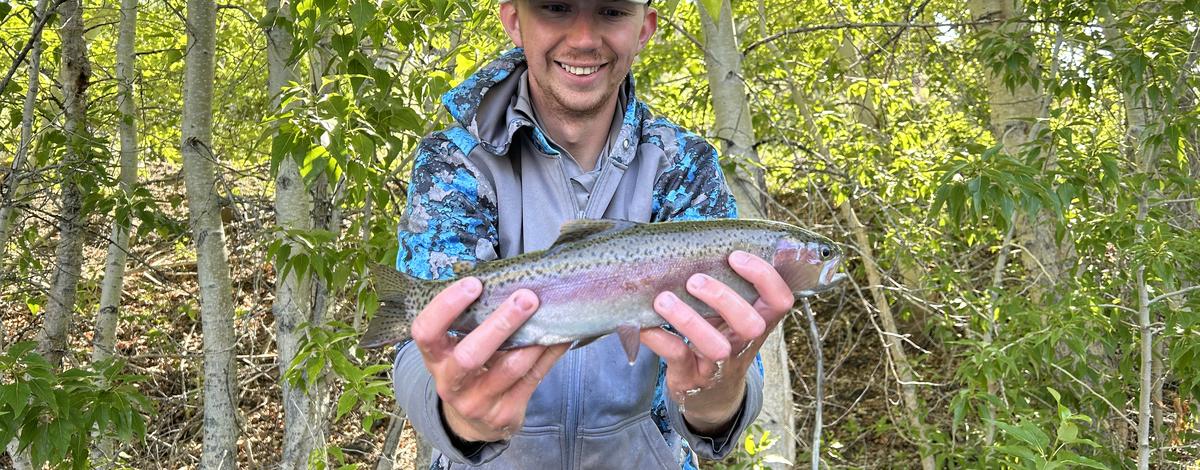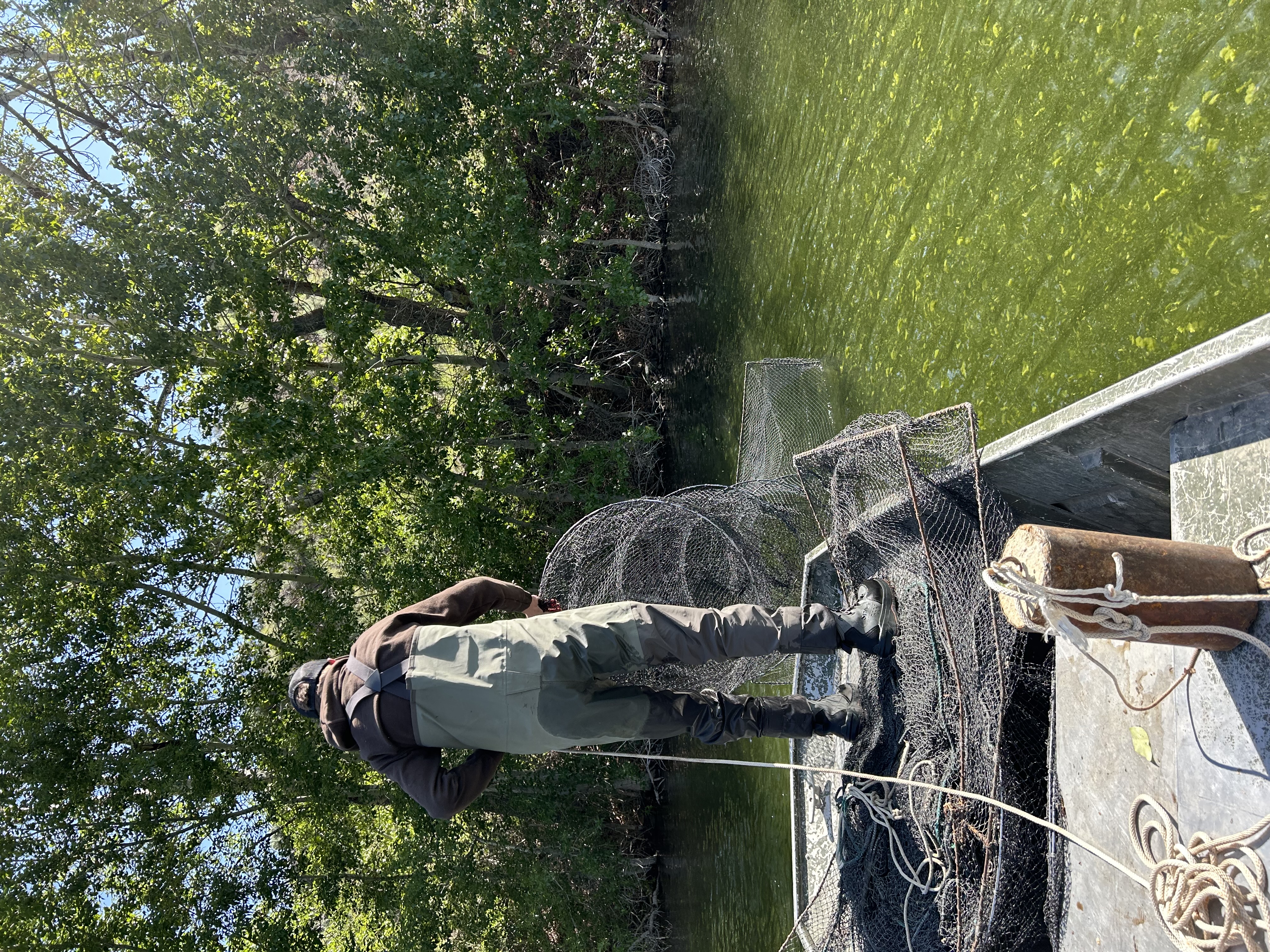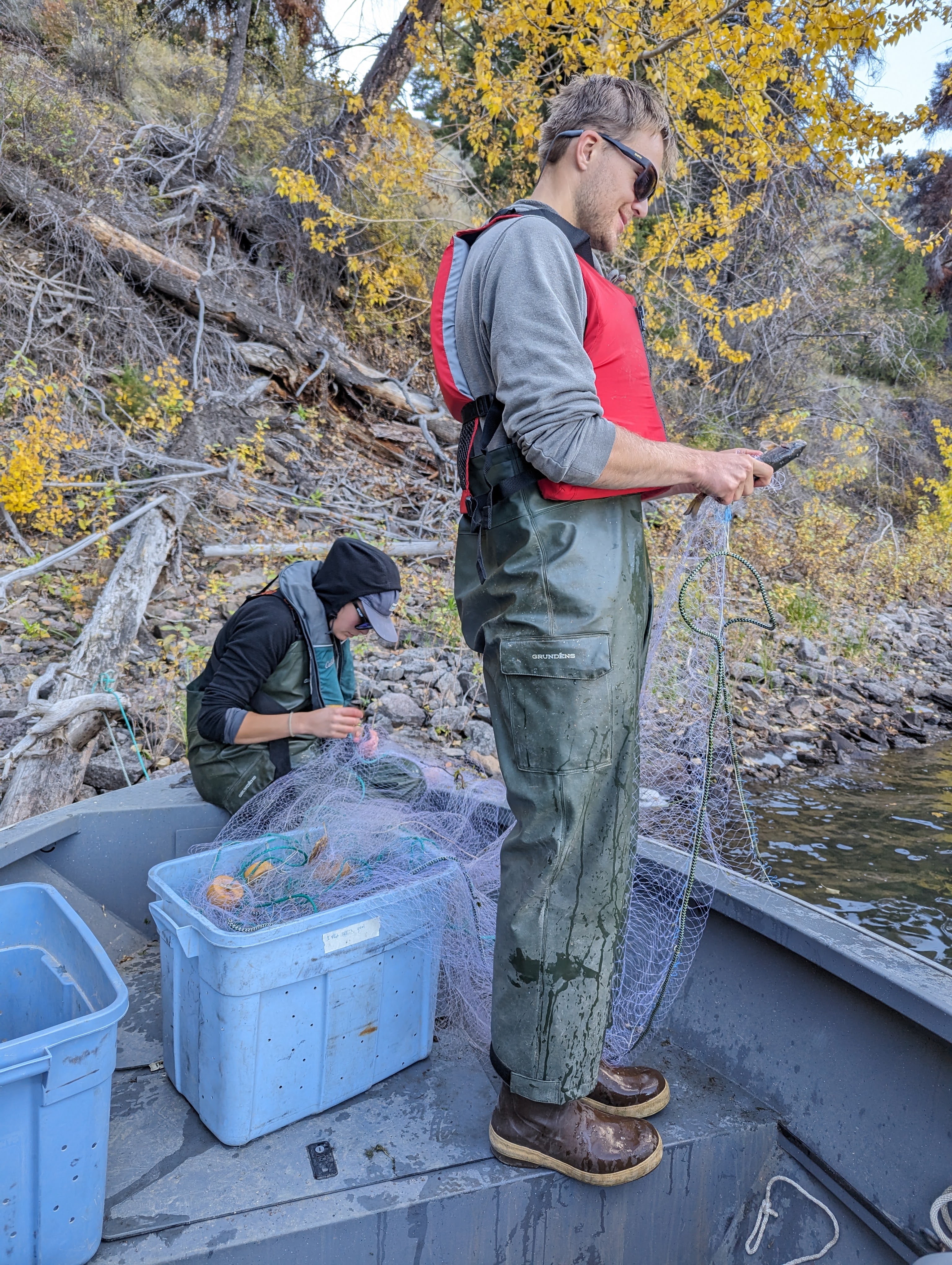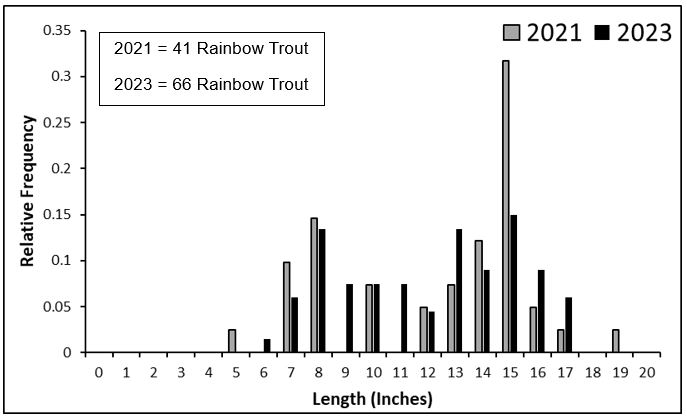By: Luke Anderson, Fisheries Technician, and Brett Kelly, Regional Fisheries Biologist
Welcome back to the next installment of our Williams Lake blog series. If you haven’t already, check out the earlier parts in the series: Part 1 that describes how we used a picket weir to monitor rainbow trout spawning in the inlet, and Part 2, which details how we partnered with local volunteers to conduct an egg-take to boost production of young rainbow trout. This blog will cover the two netting surveys conducted in 2023.
In 2018, Fish and Game confirmed the presence of bridgelip suckers in Williams Lake after receiving several reports from the public. While they primarily feed on algae growing on rocks, they will also eat aquatic insects, potentially competing with rainbow trout. Due to concern from anglers, Fish and Game fisheries staff then initiated a monitoring plan of the Williams Lake fishery in 2021.
One portion of the plan involves using a sampling gear called a fyke net to assess bridgelip suckers abundance. Fyke nets use a long lead and two net wings to guide fish through a series of funnels that end in a collection chamber where the fish become trapped. Fyke nets were set for multiple days at the beginning of summer 2021 and 2023 at nearshore locations close to suspected spawning areas of bridgelip suckers.





